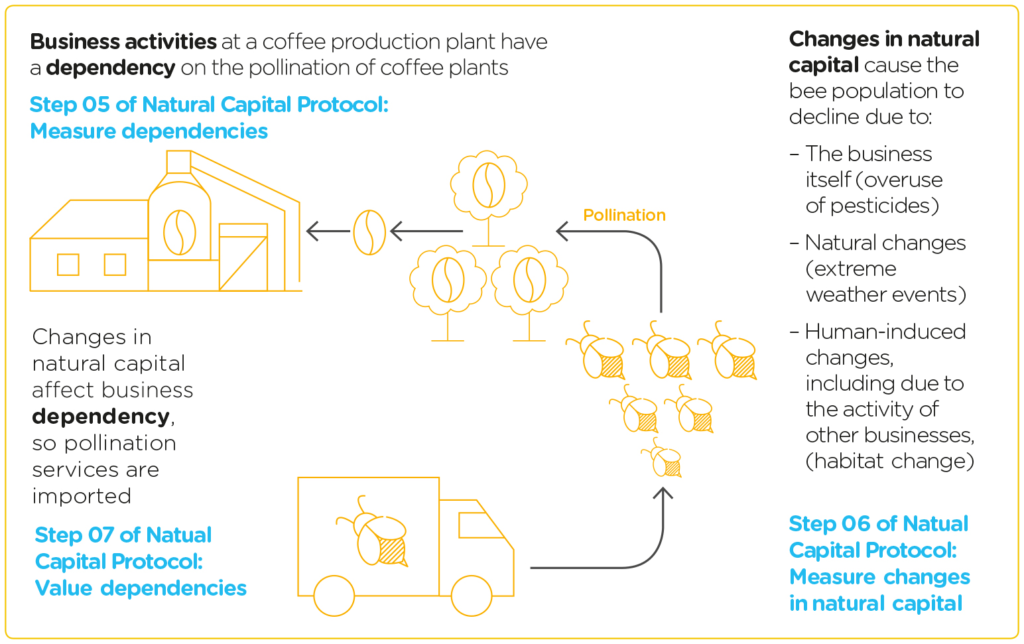Explore the resources below to assist in completing this action.
Biodiversity Guidance action 4.2.1
4.2.1 List potentially material impacts/dependencies
Once you have set the objectives of your assessment and completed your initial scoping actions, you should complete a materiality assessment. Throughout this process, it is important to remember that:
- The value of biodiversity in providing ecosystem services may be hidden and so may not initially be identified as material to a business.
- Impacts on biodiversity affect dependencies (i.e., impacts on biodiversity may also reduce the flow of ecosystem services supporting business operations).
- Impacts may appear more material when focusing on societal value as growing concern over biodiversity loss may result in greater regulation and greater consumer pressure.
The first stage of a materiality assessment is to identify impact and dependency pathways, in order to later prioritize which are material. Impact pathways describe how, as a result of a specific business activity, a particular impact driver results in changes in natural capital and how these changes impact different stakeholders. A dependency pathway shows how a particular business activity depends upon a specific component of natural capital. An example for a biodiversity dependency might be a coffee farm’s dependence on the pollination of its coffee plants to yield coffee beans (see figure 4.1). This pollination service is reliant on a variety of species and ecosystem processes (e.g., plants supplying nectar supporting the pollinators). In this way, the coffee production process is reliant on habitats rich in biodiversity.

Similarly, businesses may impact on biodiversity which in turn can affect dependencies. Impact pathways begin with a specific impact driver. An impact driver is a measurable quantity of a natural resource that is used as an input to production, or a measurable non-product output of a business activity. Using pollination for coffee plantations as an example, clearing a measurable area of land (impact driver) for agricultural conversion can reduce the species richness (biodiversity impact) within pollinator-supporting habitats, thereby increasing the risk of reduced crop productivity and disrupting the coffee production process (business value).
